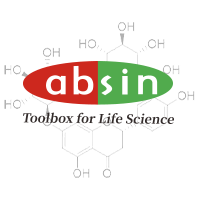Product Details
Product Details
Product Specification
| Operating Instructions | Animal and plant tissues, cells, blood, drugs | |||||||||||||||||||||
| Usage |
Self-supplied consumables:
3, blending, immediately read at 450 nm absorbance value of A0, room temperature (25 ℃) avoid light incubation 60 min, again read at 450 nm absorbance value A60, as computing delta A = A60 - A0, respectively as for delta A empty, ∆ A v, ∆ A measurement, Calculate ∆∆A pair =∆A pair -∆A empty, ∆∆A test =∆A test -∆A empty. The results were calculated as follows: The ultra oxygen anion clearance calculation formula: D = % as as (delta delta as as A v - delta delta A test) as as present delta delta A x 100% |
|||||||||||||||||||||
| Theory | Superoxide anion (O2 -) is a transient free radical created by adding electrons to oxygen. It is formed by environmental factors such as ultraviolet light, cigarette smoke, environmental pollutants and gamma radiation, or it is derived from oxidases such as xanthine oxidase or NADPH oxidase. O2 - Once formed, it attacks cellular components and damages lipids, proteins and DNA. This triggers a variety of diseases, including cancer, atherosclerosis, rheumatoid arthritis, diabetes, liver damage, and central nervous system disease. More and more attention has been paid to scavenging superoxide anion free radicals. The superoxide anion scavenging capacity detection kit (micromethod) can detect the superoxide anion scavenging capacity of animal and plant tissues, cells, blood, drugs and other samples. The principle is that xanthine oxidase (XO) catalyzes the reaction to provide superoxide anion (O2 -). O2 - reacts with the tetrazolium salt WST-8 dye to form a water-soluble colored methylene dye product, which can be readily quantified. The sample is cleared of O2 -, so less O2 - is available for the chromogenic reaction. This scavenging ability of the sample was measured by colorimetry at OD450 nm. | |||||||||||||||||||||
| Synonym | Micro Superoxide anion Scavenging Capacity Assay Kit | |||||||||||||||||||||
| Composition |
|
|||||||||||||||||||||
| Background | Superoxide anion (O2-) is a short-lived free radical produced by the addition of electrons to oxygen. It is formed in response to environmental factors such as ultraviolet rays, cigarette smoke, environmental pollutants and g-radiation, or is produced by oxidases such as xanthine oxidase or NADPH oxidase. Once formed, O2 - attack cell components and cause of lipid, protein and DNA damage. This can trigger many diseases including cancer, atherosclerosis, rheumatoid arthritis, diabetes, liver damage and central nervous system diseases. Remove superoxide anion free radical research more and more be taken seriously. | |||||||||||||||||||||
| General Notes | 1 Simply centrifuge at low speed before opening the cap. 2, if not immediately tested, the sample can be at -80° Store at C. |
|||||||||||||||||||||
| Storage Temp. | Stored at -20 ° C in the dark, valid for 6 months. | |||||||||||||||||||||
| Applications | Animal and plant tissues, cells, blood, drugs |


